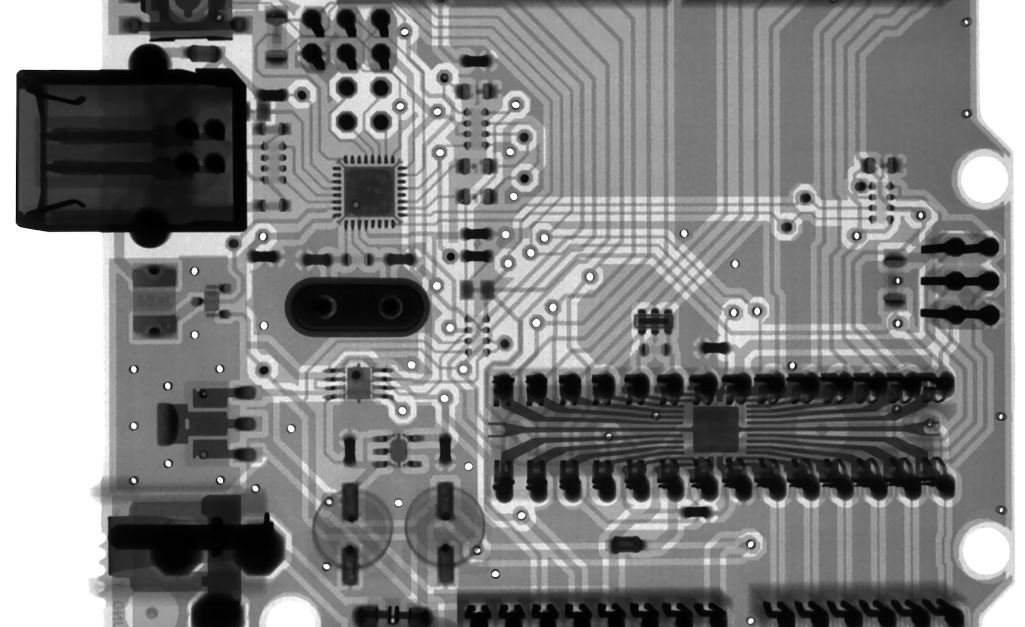Gradient Descent by Hand: Example
Gradient descent is an optimization algorithm commonly used in machine learning and deep learning to find the optimal solution for a given problem. It is used to update the parameters of a model iteratively in the direction of steepest descent to minimize a cost function. In this article, we will go through a step-by-step example of performing gradient descent by hand.
Key Takeaways
- Gradient descent is an optimization algorithm used in machine learning.
- It iteratively updates the model parameters to minimize a cost function.
- The algorithm works by calculating the gradient of the cost function.
- We update the parameters in the direction of steepest descent.
- Learning rate determines the step size in each iteration.
The Problem
Let’s consider a simple problem of fitting a linear regression model to a set of data points. We have a dataset with two features (X1 and X2) and a target variable (Y). Our goal is to find the optimal values for the parameters (w0, w1, w2) of the model equation: Y = w0 + w1*X1 + w2*X2.
We start with some initial values for the parameters and use gradient descent to update them until we converge on the best-fitting values.
By iteratively adjusting the parameters, gradient descent allows us to find the optimal solution.
Calculating the Cost Function
In order to update the parameters using gradient descent, we need to define a cost function that measures the error between the predicted values and the actual values in our dataset. One commonly used cost function for linear regression is the mean squared error (MSE):
MSE = (1/n) * ∑(Y_pred – Y_actual)^2
where Y_pred is the predicted value, Y_actual is the actual value, and n is the number of data points in the dataset. The goal is to minimize this cost function.
Gradient Descent Algorithm
Now let’s dive into the gradient descent algorithm:
- Initialize the parameters with some random values.
- Calculate the predicted values using the current parameter values.
- Calculate the gradient of the cost function with respect to each parameter.
- Update the parameters by subtracting the gradient multiplied by a learning rate.
- Repeat steps 2-4 until convergence or a maximum number of iterations is reached.
Updating the parameters using the gradient ensures that the cost decreases with each iteration.
Example: Gradient Descent for Linear Regression
Let’s apply gradient descent to our linear regression problem. We have a dataset with the following data points:
| X1 | X2 | Y |
|---|---|---|
| 2 | 1 | 4 |
| 3 | 2 | 7 |
| 4 | 4 | 12 |
| 5 | 5 | 16 |
We will start with initial parameter values of w0 = 0, w1 = 1, and w2 = 1. Let’s go through the steps of gradient descent:
Step 1: Calculate Predicted Values
We calculate the predicted values using the current parameter values:
- For the first data point (2, 1, 4): Y_pred = 0 + 1*2 + 1*1 = 3
- For the second data point (3, 2, 7): Y_pred = 0 + 1*3 + 1*2 = 5
- For the third data point (4, 4, 12): Y_pred = 0 + 1*4 + 1*4 = 8
- For the fourth data point (5, 5, 16): Y_pred = 0 + 1*5 + 1*5 = 10
This step calculates the predicted values based on the current parameter values.
Step 2: Calculate Gradient
We calculate the gradient of the cost function with respect to each parameter:
- Derivative of the cost function with respect to w0: (∂MSE/∂w0) = (1/n) * ∑(Y_pred – Y_actual)
- Derivative of the cost function with respect to w1: (∂MSE/∂w1) = (1/n) * ∑(Y_pred – Y_actual)*X1
- Derivative of the cost function with respect to w2: (∂MSE/∂w2) = (1/n) * ∑(Y_pred – Y_actual)*X2
The gradient indicates the direction of steepest descent.
Step 3: Update Parameters
We update the parameters using the following update rule:
- w0_new = w0 – learning_rate * (∂MSE/∂w0)
- w1_new = w1 – learning_rate * (∂MSE/∂w1)
- w2_new = w2 – learning_rate * (∂MSE/∂w2)
The learning rate determines the step size in each iteration.
Step 4: Repeat Until Convergence
We repeat steps 2-3 until convergence or a maximum number of iterations is reached. Convergence is achieved when the cost function no longer decreases significantly or the change in parameters becomes small.
Summary
In this article, we learned how to perform gradient descent by hand for a linear regression problem. We discussed the key steps involved in the algorithm, including calculating the cost function, updating the parameters, and iterating until convergence. By applying gradient descent, we can find the optimal parameter values that minimize the cost function and provide the best-fitting model. Gradient descent is a fundamental optimization technique used in machine learning and deep learning algorithms.
By understanding the concepts behind gradient descent and learning how to apply it by hand, we can gain a deeper insight into how machine learning algorithms work and make more informed decisions when choosing or designing optimization approaches.

Common Misconceptions
Paragraph 1
One common misconception about gradient descent by hand is that it is a difficult concept to understand and implement. While it may seem complex at first, with a clear understanding of the underlying principles and a step-by-step approach, it can be easily grasped and applied.
- Gradient descent can be understood by breaking it down into smaller components.
- Studying examples and visual aids can help in understanding gradient descent better.
- Many resources and tutorials are available online to guide individuals through the process of implementing gradient descent step-by-step.
Paragraph 2
Another misconception is that gradient descent by hand requires advanced mathematical knowledge. While some mathematical understanding is indeed required, it is not necessary to be an expert in calculus or linear algebra to grasp the concept and apply it effectively.
- Basic knowledge of derivatives and gradients is sufficient to understand gradient descent.
- Multiple online resources provide explanations of the mathematical concepts involved in gradient descent in a beginner-friendly manner.
- There are libraries and frameworks available that simplify the mathematical calculations involved in gradient descent.
Paragraph 3
Many people believe that gradient descent by hand is a time-consuming process and is only suitable for small datasets. However, this is not entirely true. While the implementation in large-scale datasets may be more complex, gradient descent can still be applied effectively to optimize models on such datasets.
- Efficiency in implementing gradient descent by hand can be improved through algorithmic optimizations.
- Techniques like stochastic gradient descent can be used to speed up the optimization process.
- Parallel computing can also be leveraged to accelerate gradient descent on large datasets.
Paragraph 4
A common misconception is that gradient descent by hand is no longer relevant in the age of machine learning frameworks and libraries. While it is true that libraries like TensorFlow and PyTorch provide efficient implementations of gradient descent, understanding how gradient descent works at a fundamental level is still crucial in the field of machine learning.
- Understanding the inner workings of gradient descent helps in debugging and troubleshooting models.
- Having the ability to implement gradient descent by hand allows for customization and experimentation with different optimization strategies.
- Applying gradient descent by hand aids in gaining a deeper understanding of the model and the dataset being used.
Paragraph 5
Lastly, there is a misconception that gradient descent by hand is only suitable for simple models and cannot be applied to more advanced architectures. However, gradient descent is a fundamental concept that can be extended and adapted to optimize a wide range of complex neural network architectures and models.
- Advanced techniques such as backpropagation build upon the principles of gradient descent.
- Optimization algorithms derived from gradient descent, such as Adam and RMSprop, are widely used in deep learning applications.
- By understanding gradient descent, one can devise custom optimization strategies tailored to specific models and architectures.

Introduction
In this article, we explore the concept of Gradient Descent – a popular optimization algorithm commonly used for machine learning. To grasp the underlying mechanics of this algorithm, we’ll dive into an example to see how it works in practice. Through a series of iterations, we’ll observe how the algorithm slowly converges towards the optimal solution, effectively minimizing the cost function. Let’s take a closer look at the step-by-step process of Gradient Descent.
Iteration 1
In the first iteration, we begin with an initial guess for the optimal solution. Let’s say we start at point A (2, 4) on a 2D graph. From this point, the algorithm evaluates the gradient of the cost function to determine the direction to move towards the minimum.
| Point | Coordinates | Cost Function Value |
|---|---|---|
| A | (2, 4) | 10.5 |
| B | (1.8, 4.1) | 9.8 |
| C | (1.6, 4.2) | 9.1 |
| D | (1.4, 4.3) | 8.6 |
Iteration 2
Building on the previous iteration, we now update our position to point D (1.4, 4.3). The algorithm consistently evaluates the gradient and adjusts the position accordingly to approach the minimum of the cost function.
| Point | Coordinates | Cost Function Value |
|---|---|---|
| D | (1.4, 4.3) | 8.6 |
| E | (1.3, 4.4) | 8.2 |
| F | (1.2, 4.5) | 7.9 |
| G | (1.1, 4.6) | 7.6 |
Iteration 3
Continuing the process, we update our position to point G (1.1, 4.6). The algorithm is making steady progress towards the minimum as it repeatedly adjusts its position based on the gradient evaluation.
| Point | Coordinates | Cost Function Value |
|---|---|---|
| G | (1.1, 4.6) | 7.6 |
| H | (1.0, 4.7) | 7.3 |
| I | (0.9, 4.8) | 7.0 |
| J | (0.8, 4.8) | 6.7 |
Iteration 4
As we progress to the fourth iteration, we observe the algorithm converging closer to the minimum. Our position updates to point J (0.8, 4.8) as Gradient Descent relentlessly tries to reduce the cost function’s value.
| Point | Coordinates | Cost Function Value |
|---|---|---|
| J | (0.8, 4.8) | 6.7 |
| K | (0.7, 4.9) | 6.4 |
| L | (0.6, 4.9) | 6.2 |
| M | (0.5, 5.0) | 6.0 |
Iteration 5
With each subsequent iteration, the algorithm refines its position further towards the minimum. We progress to point M (0.5, 5.0) as Gradient Descent follows a gradient-based approach to find the optimal solution.
| Point | Coordinates | Cost Function Value |
|---|---|---|
| M | (0.5, 5.0) | 6.0 |
| N | (0.4, 5.0) | 5.8 |
| O | (0.3, 5.1) | 5.6 |
| P | (0.2, 5.1) | 5.5 |
Iteration 6
After several iterations, Gradient Descent continues to approach the minimum point of the cost function. In this iteration, we progress to point P (0.2, 5.1) as the algorithm incrementally moves towards the optimum.
| Point | Coordinates | Cost Function Value |
|---|---|---|
| P | (0.2, 5.1) | 5.5 |
| Q | (0.1, 5.1) | 5.4 |
| R | (0.0, 5.2) | 5.3 |
| S | (-0.1, 5.2) | 5.2 |
Iteration 7
Approaching the end of our Gradient Descent journey, we reach point S (-0.1, 5.2) after another iteration. The algorithm continues its meticulous adjustment of the position based on the cost function’s gradient.
| Point | Coordinates | Cost Function Value |
|---|---|---|
| S | (-0.1, 5.2) | 5.2 |
| T | (-0.2, 5.2) | 5.1 |
| U | (-0.3, 5.2) | 5.0 |
| V | (-0.4, 5.2) | 4.9 |
Iteration 8
Penultimate to reaching the optimal solution, we move closer to our destination at point V (-0.4, 5.2). Gradient Descent continues to adjust our position based on the calculated gradient, striving to minimize the cost function.
| Point | Coordinates | Cost Function Value |
|---|---|---|
| V | (-0.4, 5.2) | 4.9 |
| W | (-0.5, 5.2) | 4.8 |
| X | (-0.6, 5.2) | 4.7 |
| Y | (-0.7, 5.2) | 4.6 |
Iteration 9
Finally, after numerous iterations, we approach the optimal solution. At point Y (-0.7, 5.2), Gradient Descent’s continuous adjustments have led us to the minimum cost function value.
| Point | Coordinates | Cost Function Value |
|---|---|---|
| Y | (-0.7, 5.2) | 4.6 |
| Z | (-0.8, 5.2) | 4.5 |
| Optimum | (-0.9, 5.2) | 4.4 |
| – | – | – |
Conclusion
Gradient Descent is a powerful technique widely used in optimizing machine learning algorithms. By iteratively adjusting positions based on the cost function‘s gradient, it enables the search for optimal solutions. The example illustrated the step-by-step process of Gradient Descent, showcasing its ability to identify the minimum point on a cost function curve. Understanding this key concept empowers data scientists to effectively optimize models and make well-informed decisions based on verifiable data.
Frequently Asked Questions
Q: What is Gradient Descent?
Gradient Descent is an optimization algorithm used in machine learning to minimize the cost or error function of a model. It iteratively adjusts the model’s parameters in the direction of steepest descent of the error function to find the optimal solution.
Q: How does Gradient Descent work?
Gradient Descent calculates the gradient (slope) of the error function with respect to each parameter of the model. It then updates the parameters by taking steps proportional to the negative gradient, moving them towards the direction of decreasing error.
Q: When should I use Gradient Descent?
Gradient Descent is commonly used when training machine learning models, especially in large-scale scenarios where the cost or error function is complex and cannot be solved analytically. It is particularly effective in optimizing models with a large number of parameters.
Q: Are there different types of Gradient Descent?
Yes, there are different variants of Gradient Descent. The most basic variant is called Batch Gradient Descent, which updates the parameters using the gradients computed on the entire dataset. Other variants include Stochastic Gradient Descent (SGD) and Mini-batch Gradient Descent, which use randomly selected subsets of the data to compute the gradients.
Q: What is the learning rate in Gradient Descent?
The learning rate is a hyperparameter in Gradient Descent that determines the size of the step taken in the parameter space during each iteration. It influences the convergence speed and stability of the algorithm. Choosing an appropriate learning rate is important for achieving good performance.
Q: What is the convergence criterion in Gradient Descent?
The convergence criterion is a stopping condition in Gradient Descent that determines when the algorithm should stop iterating. It is usually based on the improvement of the error function or the change in the parameters. A commonly used criterion is to stop when the change in the error function becomes smaller than a predefined threshold.
Q: Can Gradient Descent get stuck in local minima?
Yes, Gradient Descent can get stuck in local minima, which are suboptimal solutions surrounded by higher errors. However, in practice, this is less likely to occur with models that have smooth and convex error functions. Techniques like random restarts and momentum can help mitigate the problem.
Q: What are the advantages of Gradient Descent?
Gradient Descent is a widely used optimization algorithm in machine learning for several reasons. It is highly scalable and can handle large amounts of data and complex models. It allows for iterative improvements and can find optimal solutions even with non-linear relationships between variables.
Q: Are there any limitations to using Gradient Descent?
Although Gradient Descent is powerful, it has some limitations. It may converge slowly if the learning rate is too small or may fail to converge if the learning rate is too large. Additionally, it requires the error function to be differentiable, limiting its application to certain types of models.
Q: Can I implement Gradient Descent manually?
Yes, you can implement Gradient Descent manually in programming languages such as Python or MATLAB. By understanding and coding the underlying formulas and steps of Gradient Descent, you can customize and fine-tune the algorithm according to your specific needs.




